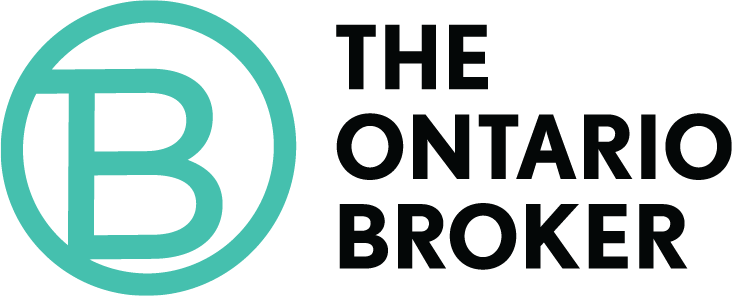October 30, 2024


Claude Miron—Partner & Account Executive, Scrivens Insurance and Financial Services

Whitney Davies—Corporate Brand Manager, Youngs Insurance Brokers
There’s no one way to market a brokerage. Client demographics, goals, budgets and capabilities all play a role in figuring out the best strategy. Two brokers share the marketing strategies and tactics they’ve been employing, and the thinking behind them.
What’s your primary marketing focus?
CM: The key focus for Scrivens Insurance is driving growth in Personal and Commercial Lines, as well as our Financial Services and other offerings. We prioritize education-based marketing that helps clients understand their risks and insurance needs while emphasizing cross-selling between our various insurance products. Highlighting specialized services, like coverage for contractors or specific industries like dealerships and wholesalers, is a big priority.
WD: To increase brand visibility, we actively participate in local events, sponsorships and philanthropic initiatives. We complement these efforts with targeted digital campaigns including SEO, social media and online advertising to reach our ideal clients effectively. Establishing ourselves as an authority in the insurance space is crucial to our strategy. We create and distribute informative content through various channels including blogs, newsletters, email campaigns and social media. Nurturing and strengthening relationships with existing clients is a key focus. We maintain regular, meaningful touchpoints through personalized communications, policy reviews and client appreciation initiatives.
How does your marketing strategy reflect your brokerage’s core values?
CM: Our core values of integrity, personalized service and expert advice are woven into all of our insurance marketing strategies. We communicate to clients that we’re not just selling policies but providing peace of mind and long-term risk management. This message is clear across all touchpoints—whether it’s discussing liability concerns for a contractor or offering tailored home insurance solutions.
WD: Our marketing strategy is a direct embodiment of our core values and mission to provide insurance with integrity and protect what matters most to our clients: Integrity and Transparency, Client-Centric Approach, Innovation and Expertise, Community Engagement, Service Excellence, and Trust and Reliability. Our marketing strategy serves as a mirror to our values and mission, ensuring that every touchpoint with potential and existing clients reinforces who we are as a brokerage and what we stand for in the insurance industry.
How do you ensure consistency in your brand messaging across marketing channels?
CM: To ensure consistency, we align our messaging on the expertise we bring to various insurance solutions—whether it’s for businesses, homeowners or auto policies. We regularly review our content to make sure that no matter where clients interact with us, they’re getting the same message about our deep knowledge and dedication to safeguarding what matters to them.
WD: Maintaining consistency in our brand messaging is crucial—we’ve developed a comprehensive approach to achieve it. To ensure this consistency is maintained across channels, we hold regular cross-departmental meetings to align our marketing, sales and customer service teams. We also use a centralized content calendar to plan and coordinate messaging. We provide ongoing training for our team on brand guidelines and current campaigns. This consistent messaging builds trust, enhances brand recognition and ultimately supports our mission to be a reliable partner in protecting what matters most to our clients.
How do you collaborate with your team or external partners to develop and execute these strategies?
CM: Our team collaborates internally between Personal Lines, Commercial Lines and Financial Services to ensure we present comprehensive solutions to clients. Externally, we work with marketing partners to refine our online presence and expand our reach in the local insurance market. Cross-department meetings are essential in creating aligned strategies that make sense for all sides of the business.
WD: We believe collaboration is key to executing effective marketing strategies that align with our goals and values. We work closely with our internal teams including sales, service and claims to ensure our messaging addresses real-world client concerns and emerging industry trends. Feedback loops across departments help us continually refine our campaigns to resonate with our target audience. We collaborate with our insurance partners to provide valuable information and resources and showcase the best coverage options and innovations while engaging with local organizations to support community-focused initiatives. This integrated approach enables us to deliver cohesive marketing strategies that reflect our mission and values.
What challenges do you face in marketing, and how are you overcoming them?
CM: One challenge has been differentiating ourselves in a crowded insurance market, especially with large direct-to-consumer brands. We’ve overcome this by focusing on our personalized service and ability to handle complex insurance needs. Many people still want to have a local, independent, family-owned brokerage look after their insurance—we emphasize this in our marketing and ensure our clients and perspective clients know that when they call us, they’ll talk to their broker, and we’re not a call center.
WD: One of the biggest challenges we face in marketing is making insurance-related content engaging and accessible. We prioritize simplifying complex topics by breaking them down into clear, straightforward language that clients can easily understand. We also produce a variety of content types to cater to different preferences. Video content has been a key tool for engaging clients by explaining insurance products and tips visually, making it more approachable. Email marketing allows us to deliver concise, tailored messages directly to clients’ inboxes, while blogs provide in-depth insights and practical advice, positioning us as a trusted resource.
What’s one marketing campaign your brokerage executed this year that stands out as particularly memorable or impactful?
CM: One of our standout marketing campaigns focused on cyber insurance. We highlighted the risks of operating without cyber coverage, using real-life examples and compelling statistics to drive home the urgency. By leveraging email campaigns and social media, we effectively reached our audience, educating them on the importance of cyber protection. The campaign’s success was evident in the increased inbound leads, as many businesses sought our expertise in securing their cyber insurance, solidifying our position as a trusted resource.
WD: One marketing campaign that stands out is our digital ad campaign promoting our Streetrider brand on social media. We leveraged the existing brand recognition of Streetrider and captured the attention of motorcycle enthusiasts with targeted messaging. Ad design was carefully crafted to appeal to our audience, featuring eye-catching visuals that resonated with riders. Copywriting emphasized the benefits of motorcycle insurance, our competitive pricing and our 110+ years of experience, creating a compelling case for riders to choose Streetrider. Our data-driven ad strategy was crucial to the campaign’s success. We conducted weekly A/B tests to optimize creative elements and targeting, making real-time adjustments based on performance data and feedback from our digital sales team.
What strategies have you found most effective for generating and converting new leads?
CM: Content around understanding insurance coverages—especially the more nuanced aspects like liability, cyber risks or commercial property insurance—has been effective. These educational pieces have drawn in clients searching for specific insurance expertise. We’ve also seen success in targeted email campaigns for renewals, upselling existing clients, and of course, word-of-mouth referrals.
WD: We’ve found that a multi-faceted approach combining targeted digital advertising with personalized follow-up strategies has been most effective to generate and convert leads. This strategy begins with targeted ads on Google and social media directed at potential clients based on their specific insurance needs. Once a prospect interacts with our ad and enters our system, we initiate a personalized email sequence. Emails are designed to nurture the relationship by providing valuable information about the product they initially expressed interest in, while subtly introducing them to other relevant insurance options they might not have considered, like bundling home and auto or adding life insurance. We’ve seen a 40% increase in conversion rates for leads that go through this cross-selling process compared to previous methods.
How do you see your marketing strategy evolving in the next few years?
CM: We plan to dive deeper into digital marketing, especially organic content that speaks directly to our clients, explaining coverages or products that may be difficult to understand like Cyber or Environmental Liability.
WD: We’re excited about evolving our strategy to embrace emerging technologies and shifting consumer behaviours. One area we’re particularly enthusiastic about is the integration of AI and data analytics to create hyper-personalized client experiences. These types of innovations aren’t just about using new technology for the sake of it, they’re about creating more meaningful, educational, personalized experiences for our clients.




